Safely Ride Your Horse in a Group
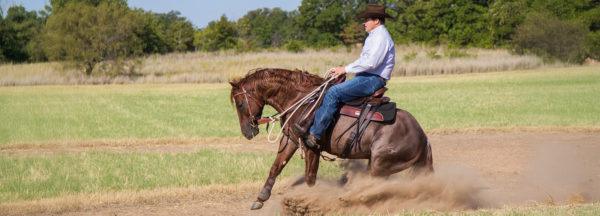
ExerCise: Cloverleaf Mayhem
One of the first things to do when introducing your horse to a group is to show him that you can still control his feet. He needs to understand that no matter how many other horses may be present, you are still the one he needs to listen to.
This exercise is a good way to reinforce the concept. This is also a great exercise to practice on your own to put some steady miles under your horse’s feet. For detailed instructions on how to ride the pattern and fix common mistakes, see the Cloverleaf Exercise in the Intermediate Series.
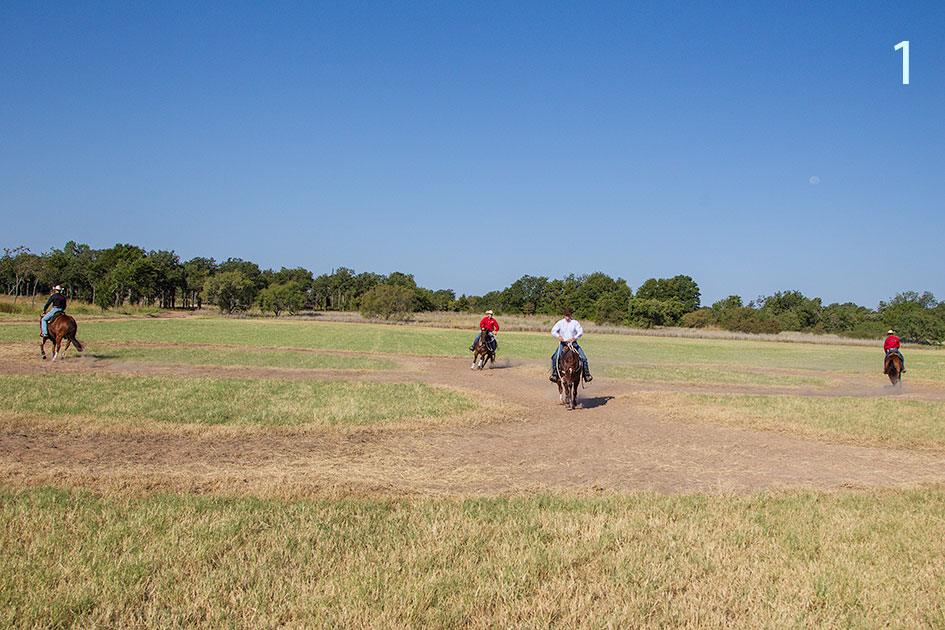
1. In this exercise, a group of riders will lope their horses in a cloverleaf pattern, with each rider doing his own separate pattern so traffic is going in both directions. In order for the exercise to have the most effect on the horses, you need at least three horse-and-rider combinations participating.
To make this exercise easier for clinic participants, I had a 100-square-foot cloverleaf pattern, with 10-foot wide paths, rototilled in an open pasture so that riders could clearly see the pattern. If that’s not an option, you can mow the pattern in a pasture.
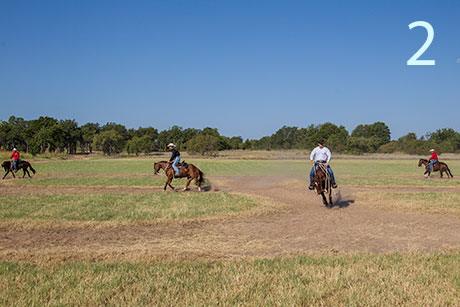
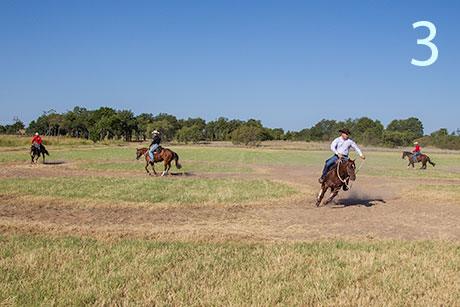
2 & 3. Although you’re riding in a group, you’ll direct your horse around the pattern, depending on what he needs. Anytime you feel him leaning in a certain direction or anticipating a turn, you’ll turn him in the opposite direction. So if you feel him leaning right, you’ll turn him left. In that way, this exercise is very much like Confused Loping, one of the first exercises you taught the horse outside.
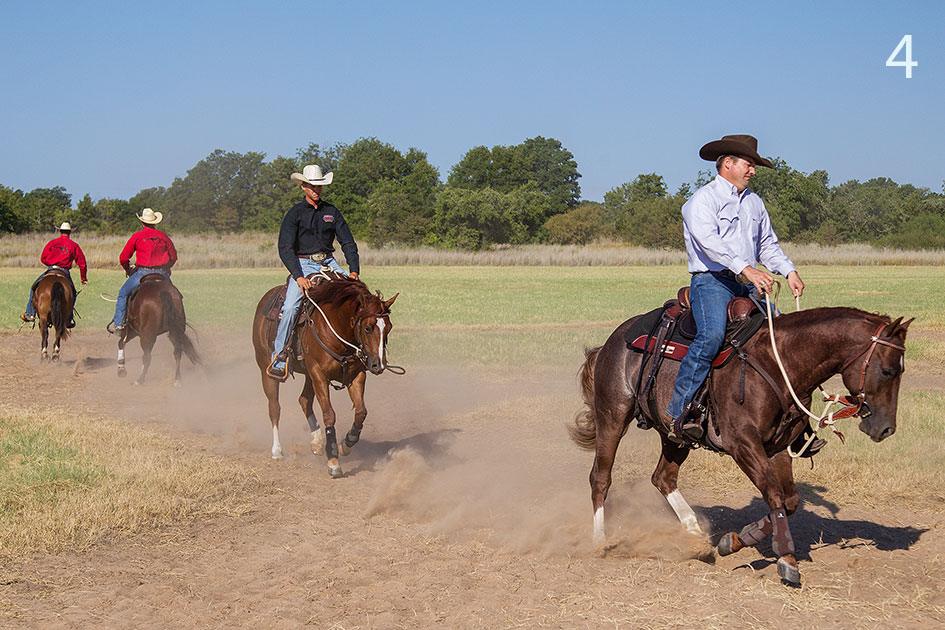
4. Ride the horse on a loose rein and dare him to lean in a particular direction or dart off on the pattern. If the horse doesn’t lean, then turn him in the same direction as the lead he is on. So if he’s loping on the left lead, turn him left.

5 This exercise is a great way to put steady miles on your horse and get him comfortable with traffic because the other horses will be coming at him from all directions—behind him, in front of him, alongside, etc. Initially, the traffic may make your horse nervous. If that happens, be a confident leader for your horse. Keep your eyes up and focus on where you’re trying to ride to. Ignore the other horses around you. Pretend it’s just you and your horse riding the pattern.
Even if your horse jumps off the path as another horse passes by you, keep your focus ahead of you and act like it never happened. If your horse is hesitant and lacks confidence, you’ll have to actively ride him forward to give him extra leadership and encouragement. You’ll find that after a while, your horse will start to ignore the other horses and follow your focus.
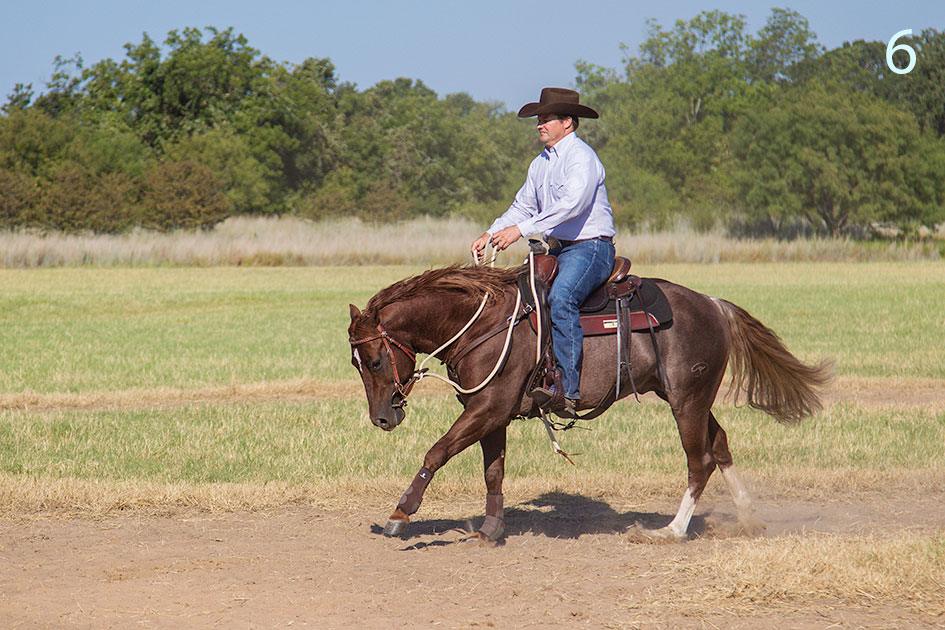
6. Continue to ride the pattern for a solid 10 minutes. Initially, your horse will probably be nervous loping around the pattern, but after several minutes of it, he’ll relax. The more you ask him to change directions on the pattern, the more he’ll have to focus on you rather than on his anxiety about the other horses.
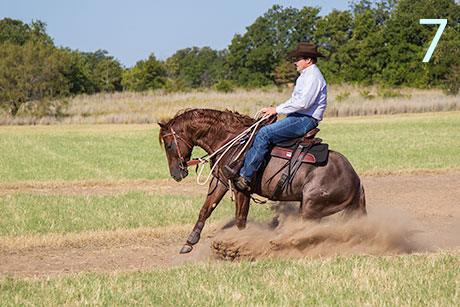
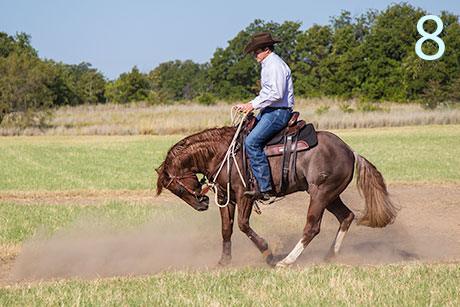
7 & 8. At the 10-minute mark, riders can stop their horses. I like to stop my horse in the middle of the pattern, because it helps to increase his draw to the middle, which will increase his responsiveness in the turns and make his lines straighter. Ride your horse a little past the halfway point and then draw him to a stop and back him up to the middle.

9. The biggest mistake you can make with this exercise is stopping the horse too soon. People have a tendency to stop the horse as soon as he slows down and relaxes. The trick is to keep going so that he gets comfortable with the situation and can develop some cadence to his gait. When a kid gets good at riding his bike, you don’t yank him off his bike, do you? Of course not, you encourage him to keep practicing. The same theory applies to your horse when it comes to loping and handling traffic.

10. We generally practice two rounds of this exercise every day for a week or so, spending 10 minutes on each session. The only way your horse will get good at loping is if you put some steady miles under his feet. Likewise, the only way he’ll get comfortable being ridden in traffic is if you practice riding him in traffic.
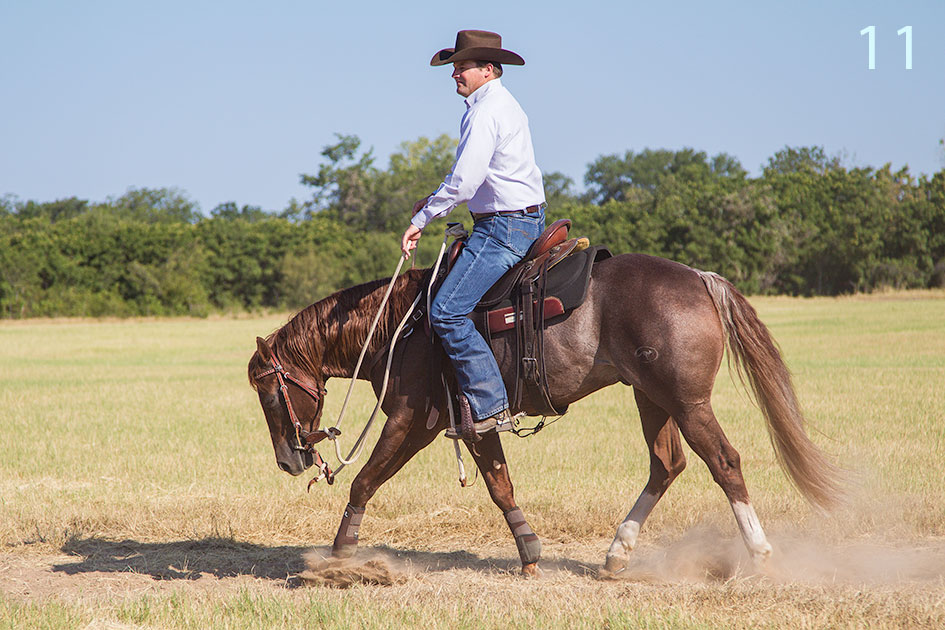
11. If your horse is on the hotter end of the scale, spend the last two minutes or so trotting him and rubbing all over him. That’ll end the exercise on a nice relaxed note. This isn’t as important for a lazy horse since you’ll be more focused on keeping him moving forward.
